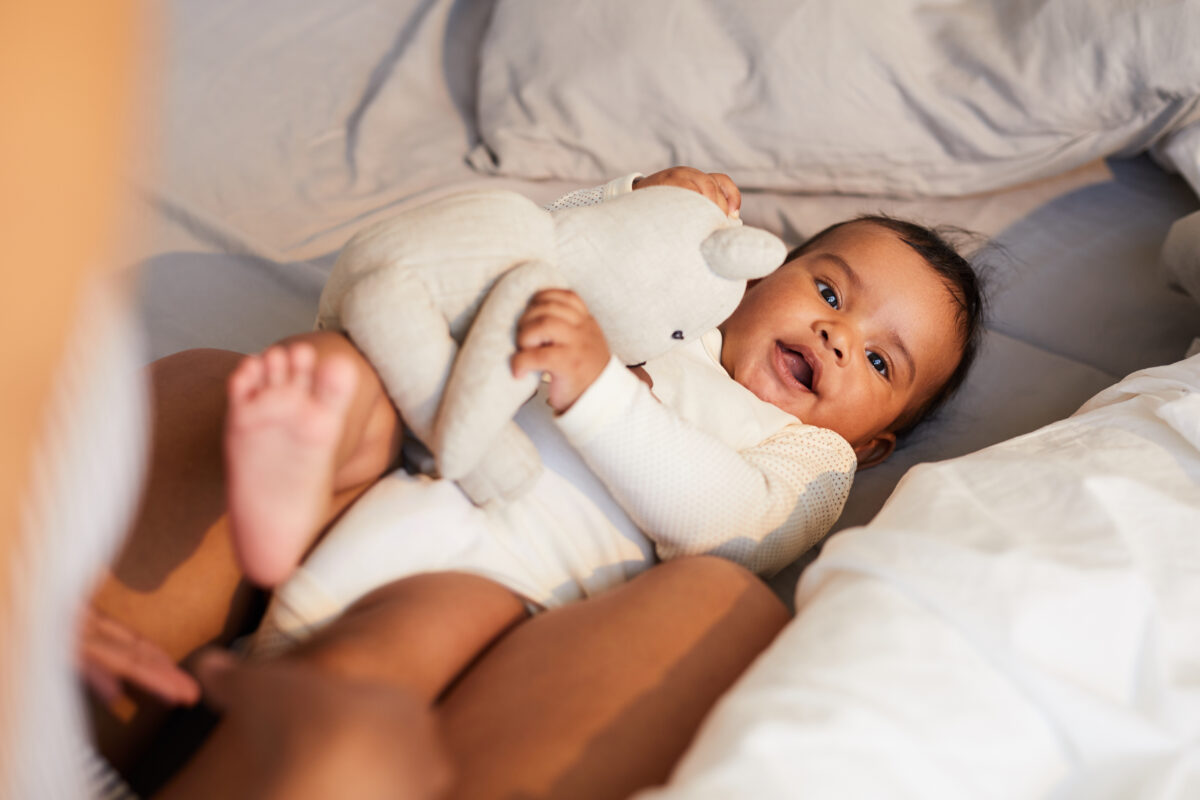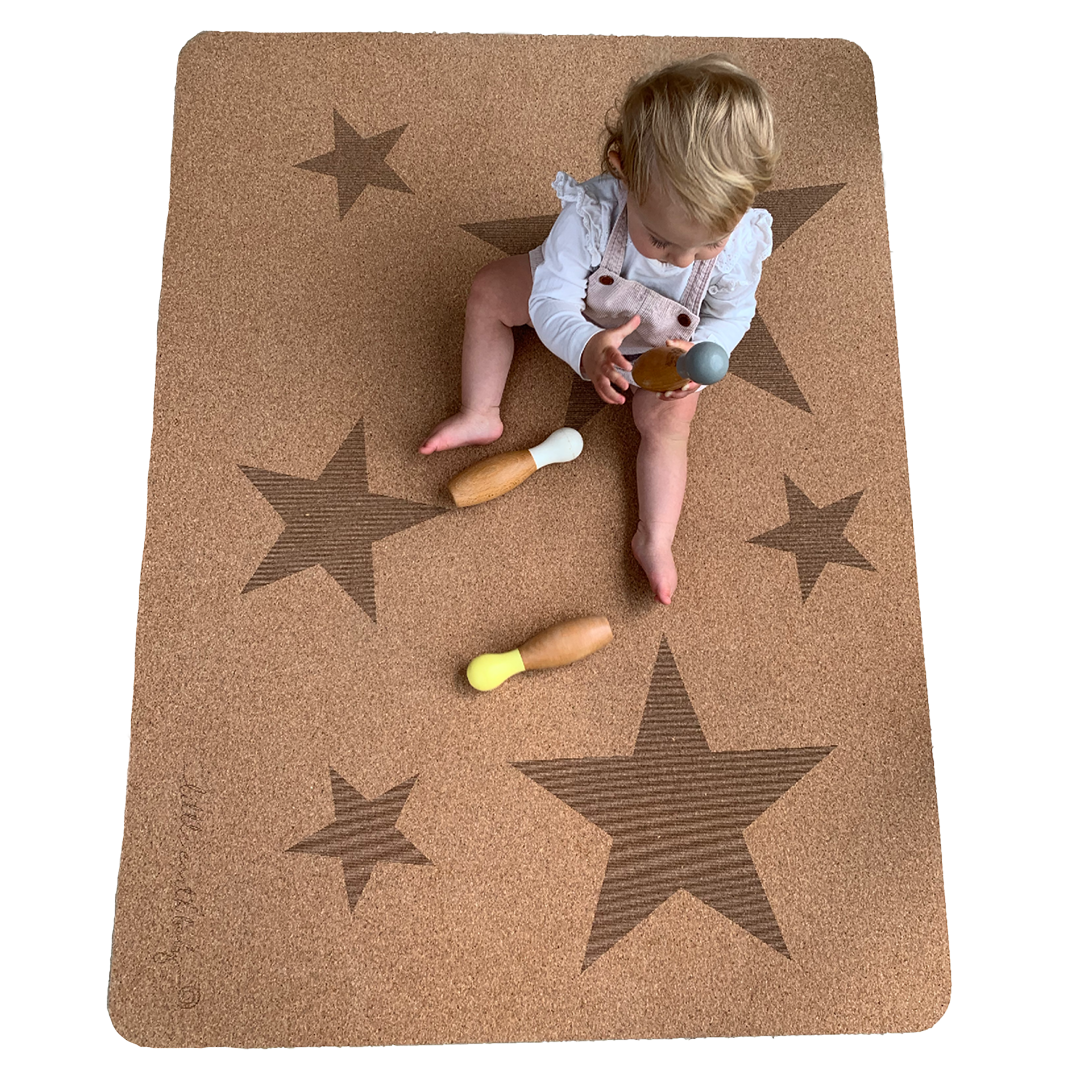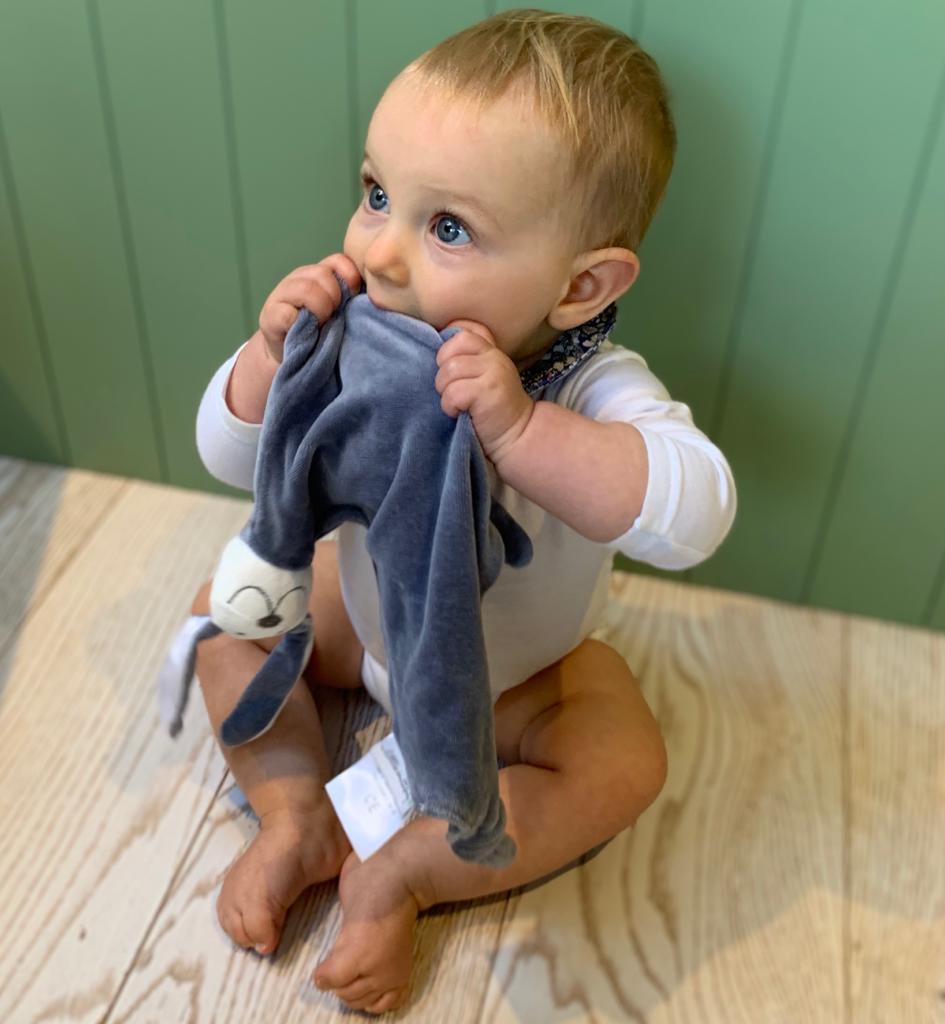Guest blog post written by Jenna, founder of Cloud and Cuckoo.
Recent research has found an alarming amount of microplastic in babies poo. If you are wondering how it got there, unfortunately there are a multitude of sources. Plastics are embedded into our daily lives and it would be impossible to irradicate all of them. It is also unclear (due to limited research) what the long term affects these chemicals are having on our bodies but we feel strongly that parents should be aware of the disparity of contamination in babies compared to adults. Here is what you need to know and some easy steps you can take to reduce your baby’s exposure to them.

Everywhere scientists look they are finding microplastic, even in the remotest of places. We are all now more aware of the colossal effect the vast amount of plastic is having on our planet…BUT…we are only just starting to understand the detrimental effect it is having on our health.
Every time a plastic bag or bottle degrades, it breaks into smaller pieces that enter our environment in a number of ways. When you wash synthetic fabrics, tiny fibers break loose and enter our water systems. The enormous amount of microplastic found in the depths of the oceans are inevitably eaten by fish that we then consume. Unfortunately the list goes on…
A class of chemicals called endocrine-disrupting chemicals, or EDCs, are the main concern and are found in many plastics. EDC’s disrupt hormones and have been connected to reproductive, neurological, and metabolic problems. The infamous plastic ingredient BPA is one such EDC that has been linked to various cancers.
In a small study, researchers from New York University School of Medicine discovered that infants have 10 to 20 times higher microplastic concentrations in their stools than adults. When trying to understand why this might be, they focused on the various sources of exposure. Kurunthachalam Kannan, a professor in the paediatrics department at NYU, and the lead researcher on the study said;
“We found that infants’ mouthing behaviour, such as crawling on carpets and chewing on textiles, as well as various products used for children including teethers, plastic toys, feeding bottles, utensils such as spoons … can all contribute to such exposure.”
Little is known about the full extent of human exposure to microplastic because research is limited but Kannan was clear about how we need to move forward..
“We need to make efforts to reduce exposure in children. Children’s products should be made free of plastics.”
Microplastics have contaminated every aspect of our lives, so while we’ll never get rid of them, we can at least reduce our exposure to them.
We have focused on baby products that are mostly made from plastic and have found brands that are offering safe alternatives that would help to decrease your baby’s exposure to these harmful chemicals.
Feeding Bottles
Plastic feeding bottles make up 82% of the world market. Scientists have found that the recommended high-temperature process for sterilising plastic bottles and preparing formula milk caused bottles to shed millions of microplastics and trillions of even smaller nanoplastics.
Both the hot water and shaking steps produced a lot of microplastics, which are far smaller than the width of a human hair. Nanoplastics are so small they are very hard to count, but the scientists estimated trillions were produced per litre of fluid.
One alternative is to prepare the formula in a glass or stainless steel container and then transfer into the plastic feeding bottle. Alternatively there are now a number of feeding bottles that are made from glass or stainless steel.
One Green Bottle
Heather Nicholson founded One Green Bottle in 2006 after being concerned about chemicals leaching into drinks from plastics and the eternal problem of disposing of huge amounts of plastics and plastic debris in the environment.
She had worked as an industrial chemist in Europe and Asia and was aware of the chemical composition of plastics and how readily compounds could leach into drinks. She Identified 304 grade stainless steel as the most inert, safe and toxin free material around.
One Green Bottle have recently launched their new baby bottles. The bottle is made from stainless steel and comes with a silicone rubber slow flow teat
The single wall stainless steel means that liquid can cool down and heat up safely and easily. All their products are FDA/BS EN 14350 certified
They are suitable for newborns and adapt as your baby develops, interchangeable with teats that have a range of flows and then can be swapped for a sippy cup lid when your baby gets a bit older.
Play Mats
Over ninety percent of all of the carpet made today is made up of synthetic fiber and one of the suggested reasons for the disparity of increased levels of microplastics in babies is because they have closer contact with carpets and furniture when learning to crawl.
This is clearly one of the sources that is much harder to replace. Regularly hoovering carpets to keep floors clear of microfibers is a more manageable way to reduce your babies contact points. You can also put a layer of protection between your baby and the carpet by using a play mat that is made from 100% organic materials for your baby to lie on.
These Non-Toxic play mats from Pure Earth Collection are even better as they are naturally antibacterial and easy to clean…
Pure Earth Collection

Pure Earth Collection is a multi award winning eco children’s brand. The company was founded by Emma Bianco through her love of babies, the planet and all things natural. Having suffered from allergies and other health issues for many years, she started looking more deeply into what might be causing the growing health complaints faced by so many of us today.
Pure Earth Collection believe that babies and children should be nurtured in a natural and non-toxic environment as much as is practical for modern day life.
They have developed a unique process for their play mats that are made from tree foam which is a natural rubber foam underside with cork on top, sustainably harvested from the sap and the bark to protect and maintain the living trees.
These non-toxic play mats are FREE from PVC, EVA, formaldehyde, formamide and other synthetic and dangerous materials and chemicals. The cork top is naturally antibacterial and provides a wipe clean surface. It is super lightweight and rolls up easily for storage or taking outside.
Toys
Babies tend to put most things they can get their hands on into their mouth. Teething toys can be made from all sorts of materials which makes it difficult to know what brands are safe, especially with recent findings of toys that are labelled as BPA FREE containing BPA! Lots of babies also love to chew on fabric and with the majority of toys being made from plastic, polyester or combinations of other synthetic materials they are hard to avoid.
There are brands out there, however, that have built their businesses on their passion to offer natural alternatives. Choose toys that are made from natural materials such as natural rubber, wood and 100% organic fabrics such as cotton or bamboo.

Another great alternative from Pure Earth Collection are their 100% organic comforters that are made completely from natural materials (including the fillers). Their Organic cotton plush comforters are GOTS certified with biodegradable bamboo filling. Their attention to detail is exceptional with Safe inks on labels, Oeko-Tex certified to class 1.
Pure Earth Collection also make organic sensory toys and have a wide range of products that have been designed by Emma who works tirelessly to raise awareness on the issues of harmful chemicals in baby products via her blog and social media platforms. Other products include sleeping bags, blankets and travel beds.
Cloud and Cuckoo Teething Toys
Cloud and Cuckoo was also born our of a desire to provide alternatives to all the plastic teething toys that have flooded the market. My Friend Goo and My Friend Hoot are made from organic natural rubber straight from the Hevea Tree. Our manufacturer has been awarded GOLS (Global Organic Latex) accreditation. This is something to be celebrated as they are the first ever natural organic rubber toy company to achieve this certification.
My Friend Hoot
My Friend Hoot is our smallest and lightest natural rubber teething ring; perfect for babies who start displaying teething symptoms at an early age.
Hollow and flexible, My Friend Hoot will help treat your baby’s teething symptoms and has also been designed to help your baby reach developmental milestones and improve their fine-motor skills such as grasping, manoeuvring, language and communication skills.
CE Certified, plastic-free, non-toxic and free from: BPA, PVC, Phthalates and Nitrosamines.
All of our eco friendly teething toys are biodegradable and made from 100% natural rubber.
They believe in preservation and reforestation and work closely with the plantation owners to ensure responsible farming to ensure their rubber is made in the most environmentally sustainable manner. No chemicals are added to the land or the latex, making their raw material just as nature intended.
My Friend Goo (Reduced Packaging)
My Friend Goo is the most effective teething ring on the market. Designed to help you and your baby through the different stages of teething our teething rings are eco-friendly and biodegradable, made from 100% pure natural rubber, non-toxic and free from: BPA, PVC, Phthalates and Nitrosamines.
My Friend Goo is hollow which provides the best surface to chew and the tail works as an alternative to a dummy or pacifier. My Friend Goo is CE Certified.
We hope you found this blog helpful. Feel free to comment below with links to other businesses that are working hard to create natural alternatives to the plastic that continues to flood the baby industry.
Thanks, Jenna
